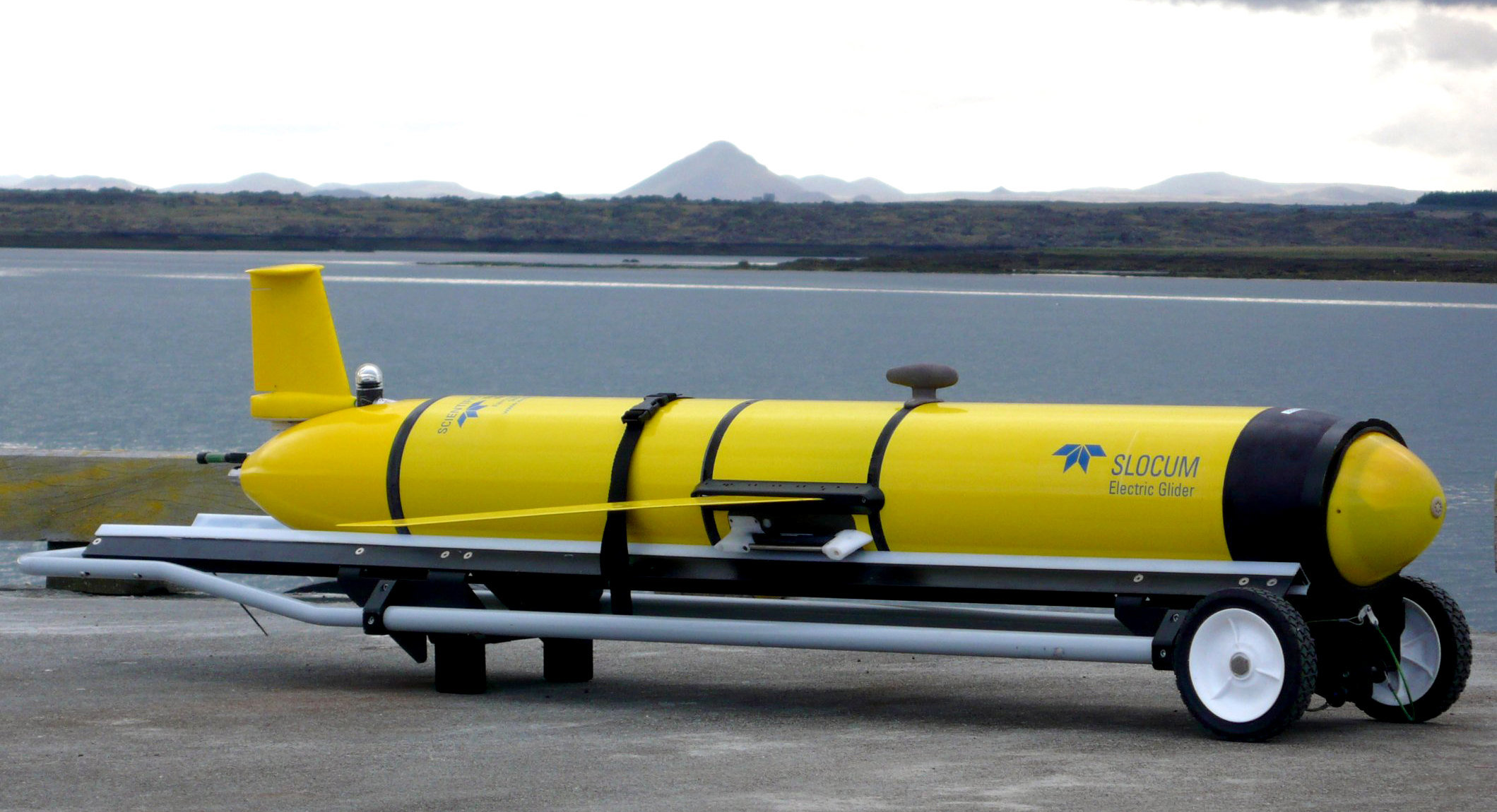Consortium for Ocean Leadership Announces Selection of Teledyne Webb Research to provide Open Ocean Gliders for Ocean Observatories Initiative (OOI)

(Click to enlarge) Teledyne Webb Research will modify its Slocum Glider (shown above) for the open oceans component of the Ocean Observatories Initiative. (Photo provided by Teledyne Webb Research)
(Washington, D.C.) — The Consortium for Ocean Leadership (OL) and Woods Hole Oceanographic Institution (WHOI) announced Teledyne Webb Research, of East Falmouth, Mass., will provide open ocean gliders supporting the Coastal and Global Scale Nodes (CGSN) component of the Ocean Observatories Initiative (OOI).
WHOI, an implementing organization on the OOI Program, awarded the contract for approximately $261,000 to Teledyne Webb Research. Under the terms of the contract Teledyne will perform design modifications to provide the gliders.
Gliders are autonomous underwater vehicles that use buoyancy propulsion to travel through the ocean gathering data on ocean physical, bio-optical, and chemical properties such as temperature, salinity, chlorophyll and dissolved oxygen. Open ocean gliders are required to support the science and communications as part of the Global Arrays in the OOI.
Under the contract, Teledyne will make necessary design modifications to the company’s “Slocum” glider in order to meet the CGSN specific requirements. There is an optionto purchase 24 open ocean gliders.
Open ocean gliders will be used in the high latitude global arrays of the OOI. The high latitude ocean plays important roles in ocean dynamics, especially during climate variability and change, but has been sampled only sparsely.
“The OOI arrays will establish sustained ocean observing presence at high latitude,” said Bob Weller, WHOI Principal Investigator for the OOI CGSN. “Those arrays use fixed moorings separated by 50 to 100 km to sample the eddy variability, and the gliders provide the important complimentary capability to sample within and around the moored array. Open ocean gliders are key to improving our understanding of how different scales of variability in ocean velocities and in ocean properties contribute to the physics, chemistry, and biology of the ocean of the high latitude regions.”
Earlier this year, Teledyne Webb received a contract to provide coastal gliders for the OOI. Read more on the coastal glider contract award here.
The OOI, a project funded by the National Science Foundation (NSF), is planned as a networked infrastructure of science-driven sensor systems to measure the physical, chemical, geological and biological variables in the ocean and seafloor. As a fully integrated system, OOI will collect and disseminate data on coastal, regional and global scales. Through a unique cyberinfrastructure, OOI will make ocean observing data available to anyone with an internet connection. Greater knowledge of the ocean’s interrelated systems is vital for increased understanding of their effects on biodiversity, climate change, ocean and coastal ecosystems, environmental health and climate.
WHOI and its partners, Oregon State University and Scripps Institution of Oceanography are responsible for the OOI coastal and global arrays and their autonomous vehicles.
The OOI Program is managed and coordinated by the OOI Project Office at the Consortium for Ocean Leadership in Washington, D.C., and is responsible for construction and initial operations of the OOI network. Four Implementing Organizations are responsible for construction and development of the overall program. In addition to WHOI, the University of Washington is responsible for cabled seafloor systems and moorings. The University of California, San Diego, is implementing the cyberinfrastructure component. Rutgers, the State University of New Jersey, is responsible for the education and public engagement software infrastructure.
The OOI five-year construction phase began in September 2009, with nearly $106 million of first-year funds coming from the American Recovery and Reinvestment Act of 2009, and $5.91 million in NSF construction funds. Requests in FY 2010 and beyond, totaling $274.58 million for construction, fund the acquisition of OOI instruments and sensors, production of key infrastructure elements such as the coastal and open ocean moorings and the deployment of these assets.
The first years of funding for OOI under the Cooperative Agreement supports a wide range of construction efforts, including production engineering and prototyping of key coastal and open-ocean components (moorings, buoys, sensors), award of the primary seafloor cable contract, completion of a shore station for power and data, and software development for sensor interfaces to the network. Subsequent years of funding will support the completion of coastal, deep-ocean, and seafloor systems, with initial data flow scheduled for early 2013 and final commissioning of the full system in 2015.
For more information on gliders’s click here.
About the Consortium for Ocean Leadership
The Consortium for Ocean Leadership is a Washington, D.C.-based nonprofit organization that represents 95 of the leading public and private ocean research and education institutions, aquaria and industry with the mission to advance research, education and sound ocean policy. The organization also manages ocean research and education programs in areas of scientific ocean drilling, ocean observing, ocean exploration, and ocean partnerships.
For more information or interviews, contact:
Kerry G. Beck
Director of Communications, OOI
Consortium for Ocean Leadership
Office: (202) 787-1685
Mobile: (202) 538-0099
kbeck@oceanleadership.org
Stephanie Murphy
Public Information Manager
Woods Hole Oceanographic Institution
Office: (508) 289-3340
media@whoi.edu
